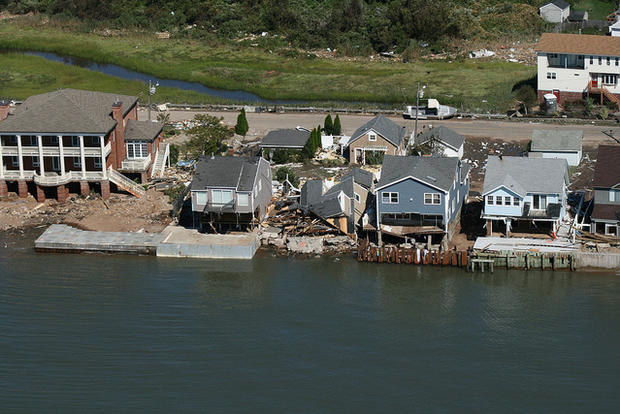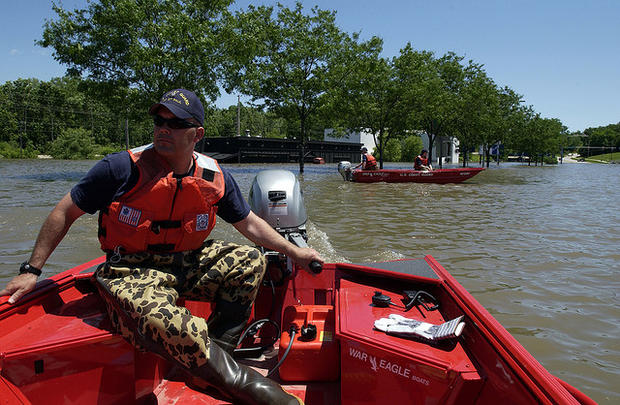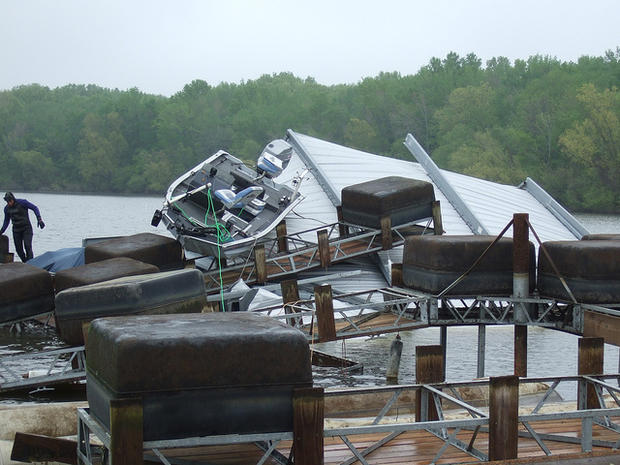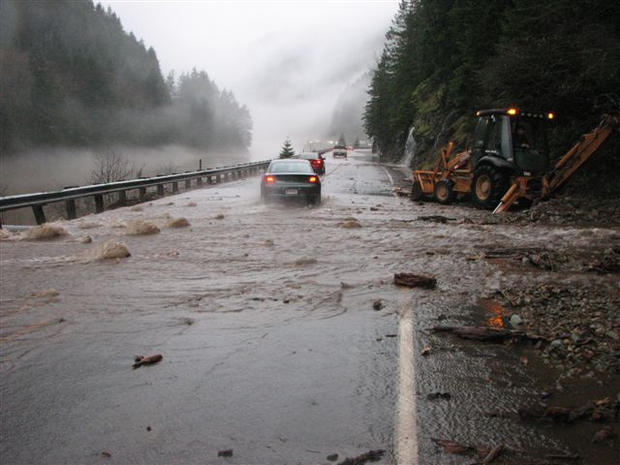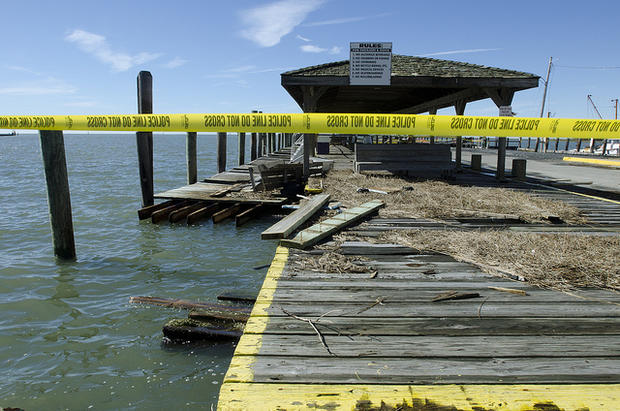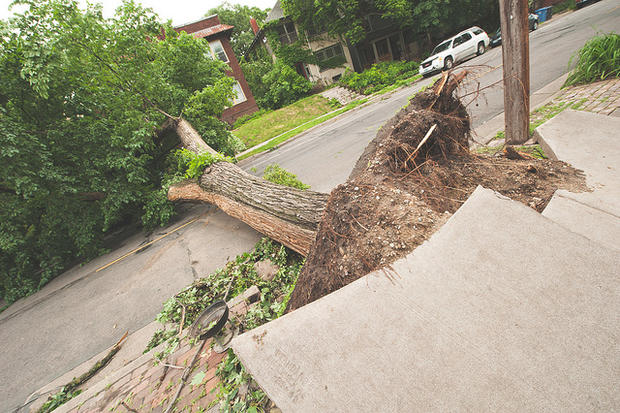10 most costly states to make an insurance claim
(MoneyWatch) Got a minor home insurance claim? You might want to think twice before calling your agent. Making a claim could boost your premium by as much as 21 percent depending on where you live, according to InsuranceQuotes.com.
After gathering data from the nation's six largest homeowner's insurers, the site came up with pre- and post-claim average prices for a sample policy that offered $144,000 in coverage and found that insurers hiked policyholder premiums by an average of 9 percent in the years following a claim. But in some states, the toll is far higher. In Minnesota, for example, you'd pay 21.2 percent more after making a claim, said Laura Adams, senior insurance analyst at InsuranceQuotes.com
"In Minnesota they are really penalizing people for making claims," she said. "On the other hand, there's no impact from making a claim in Texas, but rates there tend to be higher in the first place."
Indeed, Texas homeowner's insurance premiums generally don't change after making a claim, according to this analysis. And yet the state's insurance premiums are the highest in the nation, clocking in at an average of $1,560. That may be because insurers know they are going to get hit with claims when they write policies in the Lone Star state, which has the dubious distinction of being the disaster capital of the nation. There have been more natural disasters, emergency declarations and fire management assistance declarations in Texas than in any other state in the nation, according to the Federal Emergency Management Agency.
In the rest of these 10 states, however, the cost of making a claim is high, and likely to hike your annual insurance premium by a minimum of 15 percent. Premium increases or not, big claims should be submitted. But homeowners would be wise to try to prevent smaller claims, particularly in these states. Here are the states where making a claim is the most costly and how you might prevent the type of loss that could boost your premium.
10 most costly states to make an insurance claim
10. Pennsylvania
Premium without a claim: 716
Average after a claim: $826
Percentage change: 15.4
Prevention:The most common claims in the land of the Liberty Bell are from wind, hail and water, according to State Farm Insurance. Average claim cost for wind and hail: $5,768; water, $6,487. Since many of these claims are caused by extreme weather, such a freezing pipes, blocked drains and weak roofs that are unable to handle the severity of storms, the insurer recommends a few precautions before the winter freeze. Inspect your roof; drain and unscrew hoses from water valves to ensure that frozen water trapped in the hose doesn't back up into your house causing leaks; check your insulation and drafts to diminish the chance that internal pipes will freeze and burst.
10 most costly states to make an insurance claim
9. Iowa
Premium without a claim: $679
After a claim: $785
Percentage change: 15.6
Prevention: Iowa's most common claims are also from wind/hail, and water. But the average size of the wind and hail claims are significantly higher than in Pennsylvania (No.10 on our list), at $11,400. Naturally all the steps you'd take in that state also make sense in Iowa. But you also may want to try to prevent crime losses, which are responsible for claims averaging $3,016 per incident. State Farm's tips to avoid burglaries include using automatic timers to turn on lights and turn down the volume on answering machines so you can't hear the message from outside.
10 most costly states to make an insurance claim
8. Tennessee
Premium without a claim: $852
After a claim: $986
Percentage change: 15.7
Prevention: As in Iowa, the most common claims are from wind/hail and water, but the average size of these claims are substantial -- $10,086 and $8,495, respectively, according to State Farm. Storm prevention measures, such as clearing rain gutters and trimming dead branches off of trees overhanging your roof are wise. But making your house less attractive to criminals, which cause average losses of $3,462, can help avoid those relatively small losses that will boost your premium by more than you recover from the insurance proceeds. Since criminals like poorly lit targets, especially those that are full of brush that can hide their entry, pay attention to outdoor lighting and know that the brush clearing that could help save your home from damage in a windstorm may also make it less attractive to a burglar.
10 most costly states to make an insurance claim
7. Alaska
Premium without a claim: $903
After a claim: $1,053
Percentage change: 16.7
Prevention: Water damage is the most common -- and among the most costly -- type of claims in the Land of the Midnight Sun, with an average cost exceeding $12,000, according to State Farm. Small warning signs, like a nagging drip or water stains on the drywall, can be an indication of an internal leak that can rot floorboards and lead to major problems later. Before the weather gets really cold, inspect pipes, insulation and take a close look around your residence for these telltale signs. If you find them, here's State Farm's best advice on what to do.
10 most costly states to make an insurance claim
6. Arizona
Premium without a claim: $666
After a claim: $778
Percentage change: 16.7
Prevention: Ironically, water-related damage is also the most common form of claim in hot, dry Arizona. But the reasons are different. Instead of freezing pipes, you'll find that the dry air helps crack water lines leading to washing machines, dishwashers, ice makers and the like. And if a hose breaks when there's no one around to shut off the valve, it can do thousands of dollars in damage. The average water claim in Arizona amounts to $9,260. So inspect those lines regularly and look for telltale signs of leaks, like moisture coming from under the fridge.
Also common in Arizona are liability claims, which cost a whopping $25,706 on average. The best way to avoid these is watch your dog. Dog bites are the most common type of liability claim. Because they are so common, some insurers will hike your premium or even cancel your policy, if you buy a breed that is prone to bite.
10 most costly states to make an insurance claim
5. Oregon
Premium without a claim: $535
After a claim: $629
Percentage change: 17.6
Prevention: To be sure, wind and rain cause plenty of damage in Oregon. But the most common claim in the state is crime, with a $3,142 average per-claim cost, according to State Farm. Poor outdoor lighting and brush that can hide break-ins are risk factors, but so is casual housekeeping that might leave cash or other valuables near a window, visible to passers-by, and over-sharing on social networking sites, which could alert burglars to when you've headed out of town. Use timers to turn on and off lights and radios when you leave; close curtains and keep valuables locked up; and post the vacation photos after you return, rather than while you're still away.
10 most costly states to make an insurance claim
4. California
Premium without a claim: $939
After a claim: $1,112
Percentage change: 18.4
Prevention: As in Oregon, the most common claim in California is for crime, with an average cost per claim of $4,290. The same tips apply, but it's also worth considering preparing your house for a less common disaster: earthquake. Though the state hasn't suffered a major quake in some time, experts maintain that makes it more likely that it will suffer a serious quake in the next few years. Consider retrofitting your home to strengthen so-called "cripple walls" likely to collapse in a quake, as well as bolting a house to its foundation. Other quake prevention tips, like using museum putty to keep crystal in place, can also reduce the chance of minor quake-related losses.
10 most costly states to make an insurance claim
3. Maryland
Premium without a claim: $784
After a claim: $935
Percentage change: 19.3
Prevention: In 2012, Hurricane Sandy causd $410 million in losses to residents of the state of Maryland, and that was the second hurricane to hit the state in two years. Hurricane Irene also wreaked havoc in the state. So it's not surprising to find that wind/hail storms are the most common insured loss, with an average damage claim of $6,617. Storm windows and shutters are a must, as is clearing nearby trees of dead limbs.
10 most costly states to make an insurance claim
2. Connecticut
Premium without a claim: $1,052
After a claim: $1,269
Percentage change: 21.1
Prevention: Not only will your premium rise more than 21 percent after filing a claim, the average premium in Connecticut is high. This makes it increasingly important to review your insurance needs and, counterintuitively, possibly raise the deductible on your policy. The typical homeowner has a $500 deductible -- that's the amount of the loss you pay before insurance reimbursements kick in. Hiking that premium to $1,000 is likely to save at least 10 percent annually on the premium, according to the Insurance Information Institute. Since the average homeowner files a claim just once every 8 to 10 years, the $100 annual savings on the premium will more than make up for the bigger deductible, if you do have a claim. Moreover, it's likely to deter you from filing a minor loss that could cost you $217 annually in higher premiums for years.
As for most common losses, they're storm-related and likely helped by preparing for hurricanes and heavy wind storms. State Farm also suggests considering an impact-resistant roof, which can even land you a premium discount.
10 most costly states to make an insurance claim
1. Minnesota
Premium without a claim: $981
After a claim: $1,189
Percentage difference: 21.2
Prevention: One of the reasons Minnesota insurance premiums rise so much after a claim is because home insurers have been losing money in the state, according to the Insurance Information Institute. The state appears particularly susceptible to disasters, followed by decades of relative calm, according to Federal Emergency Management Agency data. Unfortunately, the past decade has delivered more than its share of disasters to Minnesota residents. The best advice: winterize before storm season. Check the sturdiness of your roof; clear gutters; seal and insulate areas prone to leaks and freezing. It's also wise to clean chimneys every year to ensure you can keep warm by the fire if the power goes out. Investing in a home generator is also a good idea.
